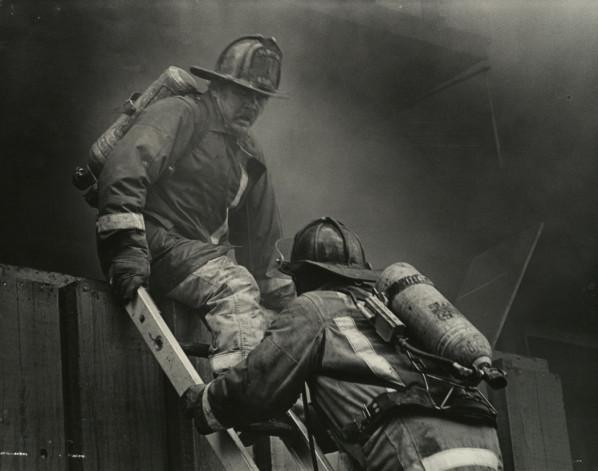|
DRAMBORA
The digital repository audit method based on risk assessment (DRAMBORA) is a methodology and associated software-based toolkit developed by Digital Curation Centre (DCC) and DigitalPreservationEurope (DPE) to support the assessment of digital preservation repositories. The DRAMBORA toolkit is intended to facilitate internal audit of digital preservation repositories by providing repository administrators with a means to assess their capabilities, identify their weaknesses, and recognise their strengths. The development of the toolkit follows a concentrated period of repository pilot audits undertaken by the DCC, conducted at a diverse range of organisations including national libraries, scientific data centres and cultural and heritage data archives. The construction of a toolkit of this kind is a dynamic process and this is the second stage in this process. The DRAMBORA toolkit represents the latest development in an ongoing international effort to conceive criteria, means and ... [...More Info...] [...Related Items...] OR: [Wikipedia] [Google] [Baidu] |
Digital Preservation
In library science, library and archival science, digital preservation is a formal process to ensure that digital information of continuing value remains accessible and usable in the long term. It involves planning, resource allocation, and application of Preservation (library and archive), preservation methods and Technology, technologies,Day, Michael. "The long-term preservation of Web content". Web archiving (Berlin: Springer, 2006), pp. 177-199. . and combines policies, strategies and actions to ensure access to digital reformatting, reformatted and "born-digital" content, regardless of the challenges of media failure and technological change. The goal of digital preservation is the accurate rendering of authenticated content over time.Evans, Mark; Carter, Laura. (December 2008). The Challenges of Digital Preservation. Presentation at the Library of Parliament, Ottawa. The Association for Library Collections and Technical Services Preservation and Reformatting Section of the A ... [...More Info...] [...Related Items...] OR: [Wikipedia] [Google] [Baidu] |
Digital Curation Centre
The Digital Curation Centre (DCC) was established to help solve the extensive challenges of digital preservation and digital curation and to lead research, development, advice, and support services for higher education institutions in the United Kingdom. Throughout its history the DCC has been an active organisation in the realm of digital preservation. In partnership with other institutions, the DCC has created and developed tools for tackling issues in digital preservation and curation. Such tools include a lifecycle model for data curation,Oliver, G., & Harvey, D. R. (2016). ''Digital curation'' (2nd ed.). Neal-Schuman. a risk assessment for digital repositories,Brown, A. (2013). ''Practical digital preservation: A how-to guide for organizations of any size''. Facet Publishing.Bermès, E. (2007). Risk management and digital repositories: The case of DRAMBORA. ''International Preservation News,'' (41), 8. and an interview protocol to assist institutions in understanding their r ... [...More Info...] [...Related Items...] OR: [Wikipedia] [Google] [Baidu] |
Humanities Advanced Technology And Information Institute
The Humanities Advanced Technology and Information Institute (HATII) was a research and teaching institute at the University of Glasgow in Scotland. It was established in 1997 with Professor Seamus Ross as Founding Director until 2009. HATII led research in archival and library science and in information/knowledge management. Research strengths were in the areas of humanities computing, digitisation, digital curation and preservation, and archives and records management. Research initiatives HATII partner in research initiatives AHDS Performing Arts, 3D-COFORM (Tools and Expertise for 3D Collection Formation), SHAMAN (Sustaining Heritage Access through Multivalent ArchiviNg), DigiCULT, CASPAR (Cultural, Artistic and Scientific knowledge Preservation, for Access and Retrieval), DELOS Digital Library Network of Excellence Preservation Cluster, Planets (Preservation and Long-term Access to our Cultural and Scientific Heritage), Primarily History, Mapping the Practice and Profession ... [...More Info...] [...Related Items...] OR: [Wikipedia] [Google] [Baidu] |
Digital Preservation Europe
The Framework Programmes for Research and Technological Development, also called Framework Programmes or abbreviated FP1 to FP9, are funding programmes created by the European Union/European Commission to support and foster research in the European Research Area (ERA). Starting in 2014, the funding programmes were named Horizon. The funding programmes began in 1984 and continue to the present day. The most recent programme, Horizon Europe, has a budget of 95.5 billion Euros to be distributed over 7 years. The specific objectives and actions vary between funding periods. In FP6 and FP7, focus was on technological research. In Horizon 2020, the focus was on innovation, delivering economic growth faster, and delivering solutions to end users that are often governmental agencies. Background Conducting European research policies and implementing European research programmes is an obligation under the Amsterdam Treaty, which includes a chapter on research and technological developme ... [...More Info...] [...Related Items...] OR: [Wikipedia] [Google] [Baidu] |
Center For Research Libraries
The Center for Research Libraries (also known by its acronym, CRL) is a consortium of North American universities, colleges, and independent research library, research libraries, based on a buy-in concept for membership of the consortia. The consortium acquires and preserves traditional and digital resources for research and teaching and makes them available to member institutions through interlibrary loan and electronic delivery. It also gathers and analyzes data pertaining to the preservation of physical and digital resources, and fosters the sharing of expertise, in order to assist member libraries in maintaining their collections. The Center for Research Libraries was founded in 1949, as the Midwest Inter-Library Center (MILC). The traditional role of CRL was as an aggregator of tangible collection materials; however, this focus has been updated in the digital age into the CRL's current role as a facilitator of collection development, digitization, and licensing collections ... [...More Info...] [...Related Items...] OR: [Wikipedia] [Google] [Baidu] |
Risk
In simple terms, risk is the possibility of something bad happening. Risk involves uncertainty about the effects/implications of an activity with respect to something that humans value (such as health, well-being, wealth, property or the environment), often focusing on negative, undesirable consequences. Many different definitions have been proposed. One ISO standard, international standard definition of risk is the "effect of uncertainty on objectives". The understanding of risk, the methods of assessment and management, the descriptions of risk and even the definitions of risk differ in different practice areas (business, economics, Environmental science, environment, finance, information technology, health, insurance, safety, security, security, privacy, etc). This article provides links to more detailed articles on these areas. The international standard for risk management, ISO 31000, provides principles and general guidelines on managing risks faced by organizations. Defi ... [...More Info...] [...Related Items...] OR: [Wikipedia] [Google] [Baidu] |
Digital Curation
Digital curation is the selection, Preservation (library and archival science), preservation, maintenance, collection, and archiving of Digital data, digital assets. Digital curation establishes, maintains, and adds value to repositories of digital data for present and future use. This is often accomplished by archivists, librarians, scientists, historians, and scholars. Enterprises are starting to use digital curation to improve the quality of information and data within their operational and strategic processes. Successful digital curation will mitigate digital obsolescence, keeping the information accessible to users indefinitely. Digital curation includes digital asset management, data curation, digital preservation, and electronic records management. Word History Much like the word ''archive'' has layered meanings and uses, the word ''curation'' is both a noun and a verb, used originally in the field of museology to represent a wide range of activities, most often associated ... [...More Info...] [...Related Items...] OR: [Wikipedia] [Google] [Baidu] |
Digital Obsolescence
Digital obsolescence is the risk of data loss because of inabilities to access digital assets, due to the hardware or software required for information retrieval being repeatedly replaced by newer devices and systems, resulting in increasingly incompatible formats. While the threat of an eventual " digital dark age" (where large swaths of important cultural and intellectual information stored on archaic formats becomes irretrievably lost) was initially met with little concern until the 1990s, modern digital preservation efforts in the information and archival fields have implemented protocols and strategies such as data migration and technical audits, while the salvage and emulation of antiquated hardware and software address digital obsolescence to limit the potential damage to long-term information access. [...More Info...] [...Related Items...] OR: [Wikipedia] [Google] [Baidu] |
Digital Library
A digital library (also called an online library, an internet library, a digital repository, a library without walls, or a digital collection) is an online database of digital resources that can include text, still images, audio, video, digital documents, or other digital media formats or a library accessible through the internet. Objects can consist of digitization, digitized content like Printing, print or photography, photographs, as well as born-digital, originally produced digital content like word processor files or social media posts. In addition to storing content, digital libraries provide means for organizing, searching, and information retrieval, retrieving the content contained in the collection. Digital libraries can vary immensely in size and scope, and can be maintained by individuals or organizations. The digital content may be stored locally, or accessed remotely via computer networks. These information retrieval systems are able to exchange information with each ... [...More Info...] [...Related Items...] OR: [Wikipedia] [Google] [Baidu] |
Research Libraries Group
The Research Libraries Group (RLG) was a U.S.-based library consortium that existed from 1974 until its merger with the OCLC library consortium in 2006. RLG developed the Eureka interlibrary search engine, the RedLightGreen database of bibliographic descriptions, and ArchiveGrid, a database containing descriptions of archival collections. It also developed a framework known as the "RLG Conspectus" for evaluating research library collections, which evolved into a set of descriptors used in library collection policy statements, last updated in 1997.Collecting Levels . Library of Congress. loc.gov. Retrieved 2017-06-19. The used the conspectus in 2015 in revising its own collection pol ... [...More Info...] [...Related Items...] OR: [Wikipedia] [Google] [Baidu] |
Collections Care
Disaster preparedness in museums, galleries, libraries, archives and private collections, involves any actions taken to plan for, prevent, respond or recover from natural disasters and other events that can cause damage or loss to cultural property. 'Disasters' in this context may include large-scale natural events such as earthquakes, flooding or bushfire, as well as human-caused events such as theft and vandalism. Increasingly, anthropogenic climate change is a factor in cultural heritage disaster planning, due to rising sea levels, changes in rainfall patterns, warming average temperatures, and more frequent extreme weather events. The primary goal of disaster preparedness is to identify actions that can be taken to reduce either the chance of a disaster occurring or to lessen its effects. For example, clearing building gutters reduces the chance of overflow and leaks during heavy rainfall; storing collection objects inside closed cabinets reduces the chance of water damage sh ... [...More Info...] [...Related Items...] OR: [Wikipedia] [Google] [Baidu] |
Library And Information Science Software
A library is a collection of books, and possibly other materials and media, that is accessible for use by its members and members of allied institutions. Libraries provide physical (hard copies) or digital (soft copies) materials, and may be a physical location, a virtual space, or both. A library's collection normally includes printed materials which may be borrowed, and usually also includes a reference section of publications which may only be utilized inside the premises. Resources such as commercial releases of films, television programmes, other video recordings, radio, music and audio recordings may be available in many formats. These include DVDs, Blu-rays, CDs, cassettes, or other applicable formats such as microform. They may also provide access to information, music or other content held on bibliographic databases. In addition, some libraries offer creation stations for makers which offer access to a 3D printing station with a 3D scanner. Libraries can vary widely ... [...More Info...] [...Related Items...] OR: [Wikipedia] [Google] [Baidu] |






